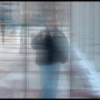Free Online Productivity Tools
i2Speak
i2Symbol
i2OCR
iTex2Img
iWeb2Print
iWeb2Shot
i2Type
iPdf2Split
iPdf2Merge
i2Bopomofo
i2Arabic
i2Style
i2Image
i2PDF
iLatex2Rtf
Sci2ools
CVPR
2006
IEEE
2006
IEEE
Lensless Imaging with a Controllable Aperture
In this paper we propose a novel, highly flexible camera. The camera consists of an image detector and a special aperture, but no lens. The aperture is a set of parallel light attenuating layers whose transmittances are controllable in space and time. By applying different transmittance patterns to this aperture, it is possible to modulate the incoming light in useful ways and capture images that are impossible to capture with conventional lens-based cameras. For example, the camera can pan and tilt its field of view without the use of any moving parts. It can also capture disjoint regions of interest in the scene without having to capture the regions in between them. In addition, the camera can be used as a computational sensor, where the detector measures the end result of computations performed by the attenuating layers on the scene radiance values. These and other imaging functionalities can be implemented with the same physical camera and the functionalities can be switched from ...
Bare Image Detector | Computer Vision | CVPR 2006 | Flexible Camera | Light Attenuating Layers | Physical Camera | Prototype Camera |
| Added | 12 Oct 2009 |
| Updated | 28 Oct 2009 |
| Type | Conference |
| Year | 2006 |
| Where | CVPR |
| Authors | Assaf Zomet, Shree K. Nayar |
Comments (0)

